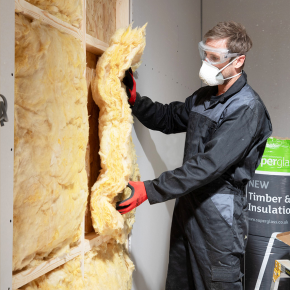
GUEST ARTICLE: Biodiversity Net Gain – Successes and Challenges
Biodiversity net gain (BNG) became mandatory for major developments from 12 February 2024 and for small sites from 2 April. A year on from its initiation, Mark Topping, Director of Design, Lanpro, looks at the triumphs and tribulations…
As a property consultancy consisting of ecologists and landscape consultants in addition to planners, Lanpro has long promoted and implemented a holistic approach to masterplanning which takes the existing environmental parameters as its base and delivers a scheme around this. The implementation of BNG, however, takes this a step further.
It goes without saying that BNG has had a significant impact on the development sector. BNG must now be considered at all stages of the planning process, from validation, through to assessment, discharge of conditions and reporting. Furthermore, the requirement to manage onsite BNG for 30 years has a significant impact on the management of schemes.
Biodiversity metric calculator
For the purposes of the regulations, BNG is measured using the biodiversity metric calculator which has been developed by Defra. Net gain is measured as the percentage change in the biodiversity value of pre and post-development habitats. The minimum 10% gain must be achieved separately for area habitats, hedgerows and watercourses, if these different categories of habitat occur within the planning boundary.
Although initiated by the previous government, the introduction of BNG is well timed in view of the new government’s revised policy on Green Belt release. The increased flexibility regarding Green Belt release could help implement BNG as it can unlock land for development within proximity of green space, which is often of a low quality in biodiversity terms. Thus the ‘grey belt’ – poor quality or brownfield sites within the greenbelt – provide an opportunity for development without a considerable cost in BNG.

Most would view the policy as a net gain in many respects: over time, it will result in considerable enhancements to natural environments and will see greener, healthier developments with high value and high quality habitats.
National Audit Office
That said, the implication has invariably exposed issues and challenges. A report by the National Audit Office published an assessment of the progress that Defra and Natural England had made in implementing BNG, criticising Defra for launching BNG, ‘without having all elements in place to ensure its long-term success and issues with monitoring and enforcement with onsite and offsite gains’. It was also critical of the reporting, financing, monitoring and implementation of BNG.
It is important to remember that we are still in the early days of a very significant change in approach and that an element of confusion is inevitable. An example of this is that in some cases, developers who understand the process are looking carefully at their application boundaries in relation to the ‘red line’ (the application boundary) and the ‘blue line’ (their landholding which is not part of the development application). In doing so, they can ensure that they are assessing only core areas and are not over-prescribing BNG. They are also considering blue line ownership opportunities and landbanks for ‘off-site’ provision of BNG.
Rigid legislation
In some respects it is frustrating that the application of the legislation is so rigid, specifically in relation to timing. An example is a site that Lanpro is currently working on, where the development is replacing grassland. The grassland as originally surveyed was of a low quality and therefore scored as such. The development went through a protracted planning application and during this time the client failed to maintain the grassland as rigorously as before.
Due to the length of the negotiations with the LPA, a repeat ecology survey was required. Upon re-survey it was found that the grassland’s condition had improved beyond that originally surveyed. Consequently, whereas the developer originally had a surplus of BNG on site, it now had a deficit due to the utilised land being deemed to be of a higher quality than previously.
The only feasible way to address this on site was the removal of proposed native species tree planting proposed to free up more grassland habitat. This removed potential for new woodland on site which would have responded well to enhancing the sylvan landscape character of the area.
The fact that the grassland habitat improved in such a short timeframe raises questions about the long-term value of such a habitat and was particularly disappointing as it meant a reduction in proposed woodland cover on site, which the ecologist maintained would have created a significantly better on-site habitat than the enhanced grassland.
Inevitable fears
At such an early stage in the implementation of BNG, fears of inadequate scrutiny or decision-making delay are inevitable. Inadequate scrutiny could lead to schemes coming forward that don’t add value to nature due to the quality of the interventions proposed. Delays to decision-making would cause significant issues to the whole planning process and may have implications on the construction industry too, subject to the working of conditions or lack of decision-making which may have likely prestart conditions relating to BNG.
The fact that few schemes have gone to appeal over BNG is a good sign, but the impact on smaller developers has not yet been measured; we should not overlook the constraints that may be much greater for some developers than others.
Latest news

13th February 2025
Scafftag: Make time consuming paper based equipment inspections a lot faster
Scafftag’s SafeTrak digital system supports inspection planning, equipment inspections, and reporting to improve safety and performance.
Posted in Articles, Building Industry News, Building Products & Structures, Building Regulations & Accreditations, Building Services, Facility Management & Building Services, Health & Safety, Information Technology, Innovations & New Products, Security and Fire Protection, Site Preparation, Videos
11th February 2025
Glidevale Protect and Superglass join forces
Glidevale Protect has recently announced a collaboration with Superglass Insulation to provide a collective system solution that strengthens the offering for housebuilders, specifiers and offsite manufacturers.
Posted in Articles, Building Industry News, Building Products & Structures, Building Services, Building Systems, Facility Management & Building Services, Insulation, Restoration & Refurbishment, Retrofit & Renovation, Sustainability & Energy Efficiency, Walls
10th February 2025
Origin achieves world-leading powder coating accreditation
Origin, the UK’s leading manufacturer of aluminium doors and windows, has been awarded the internationally renowned Qualicoat accreditation for its state-of-the-art, in-house powder coating facility.
Posted in Aluminium Products, Architectural Ironmongery, Articles, Building Industry News, Building Products & Structures, Building Regulations & Accreditations, Building Systems, Doors, Glass, Glazing, Paints, Coatings & Finishes, Restoration & Refurbishment, Retrofit & Renovation, Windows
10th February 2025
ASSA ABLOY EMEIA: Powerful digital control refined with elegance
ASSA ABLOY’s Aperio® H100 packs the security and convenience of digital access into an award-wining wireless door handle. Now, to meet demand from the architecture, design and construction sectors, the H100 is also available in black – the ultimate expression of digital control and style.
Posted in Access Control & Door Entry Systems, Architectural Ironmongery, Articles, Building Industry News, Building Products & Structures, Building Services, Doors, Facility Management & Building Services, Information Technology, Innovations & New Products, Retrofit & Renovation, Security and Fire Protection
 Sign up:
Sign up: